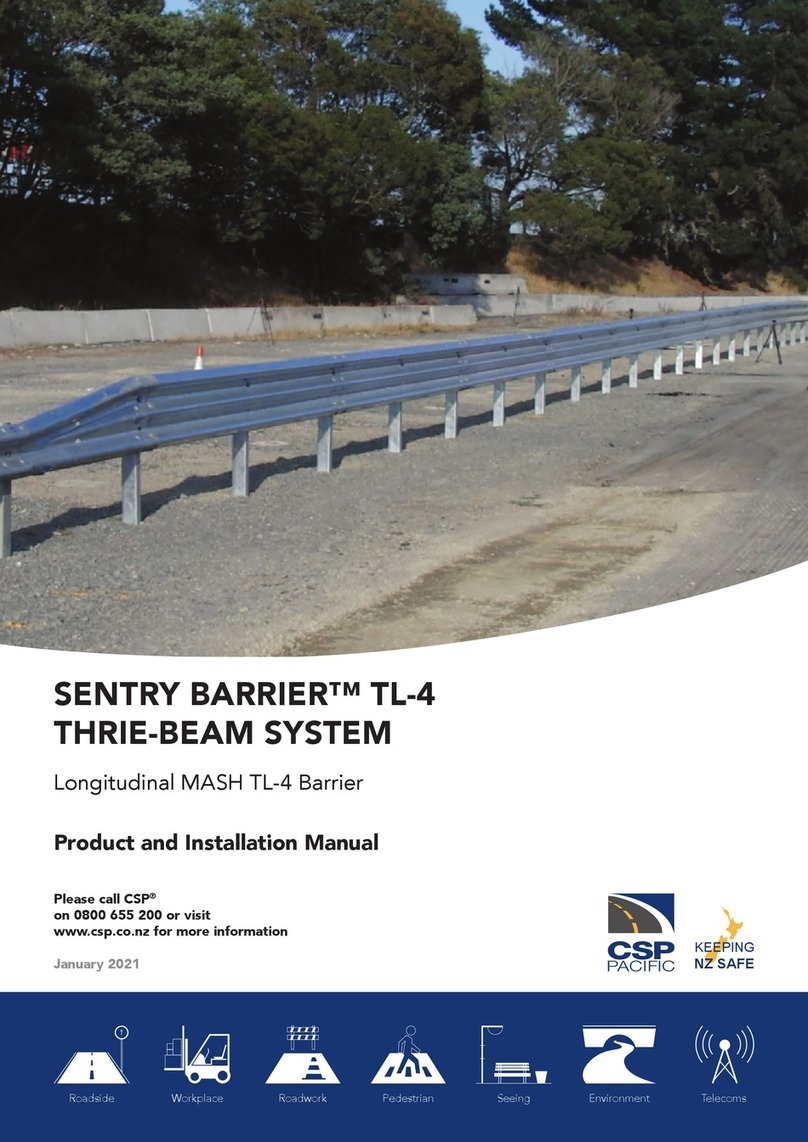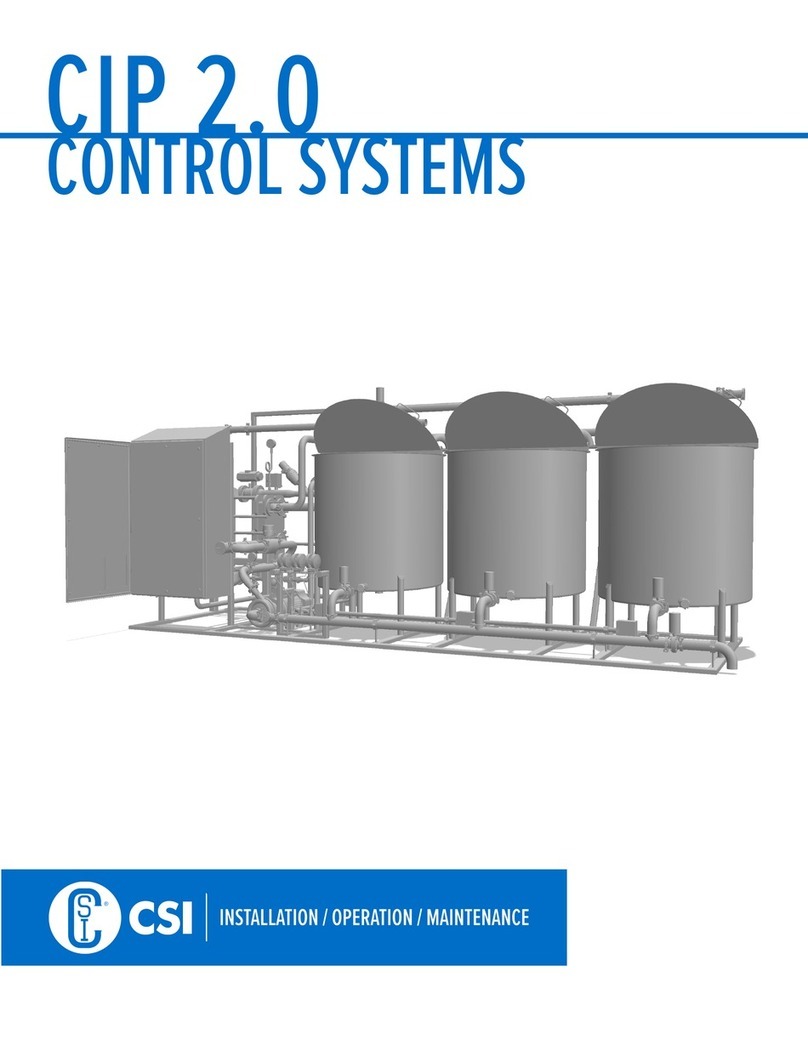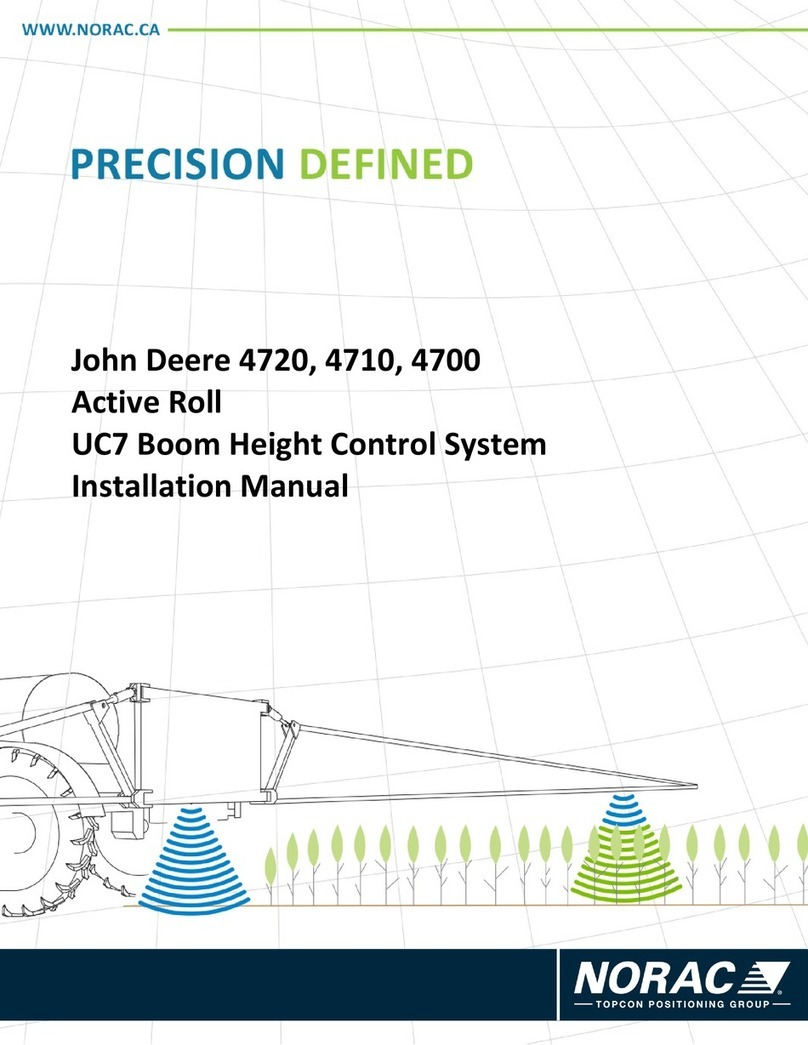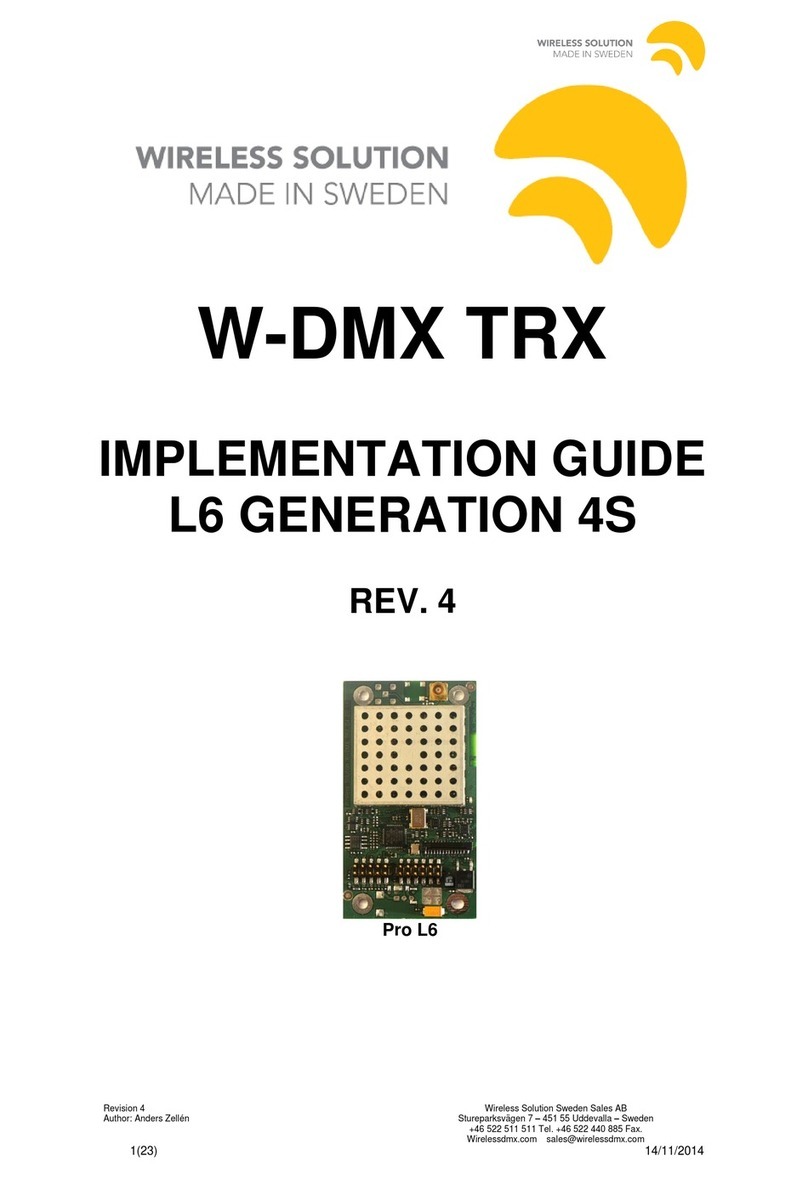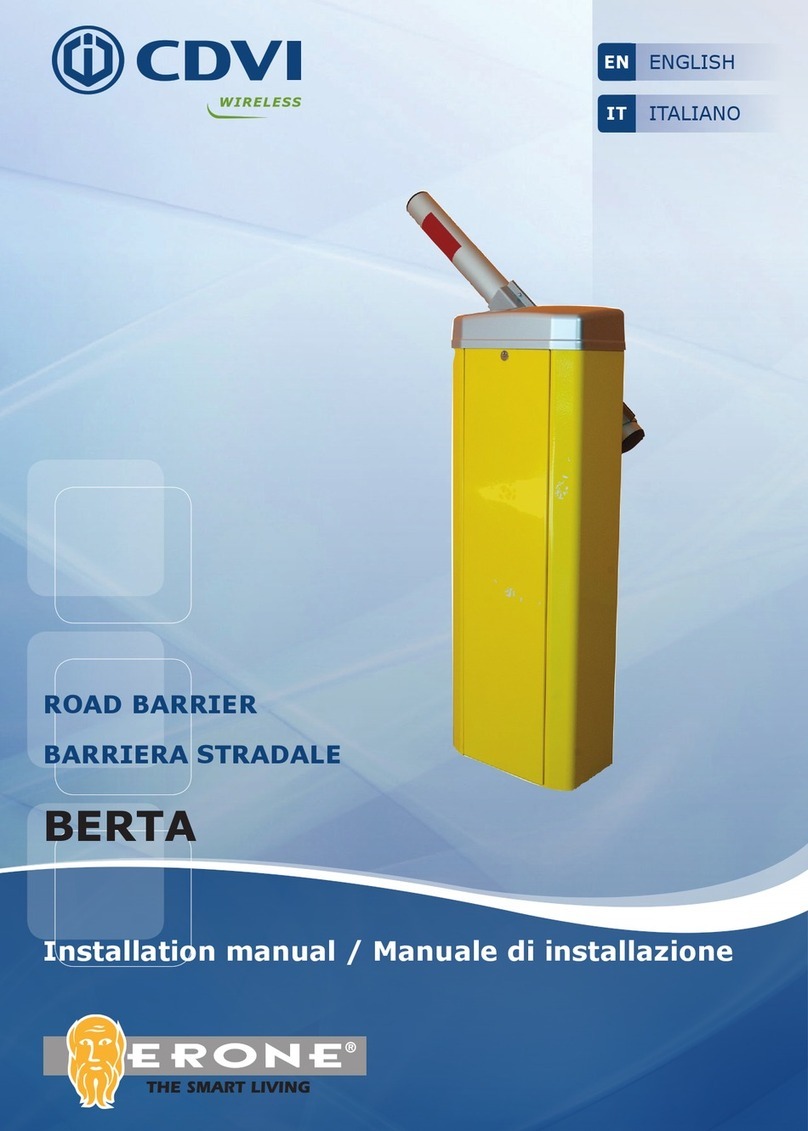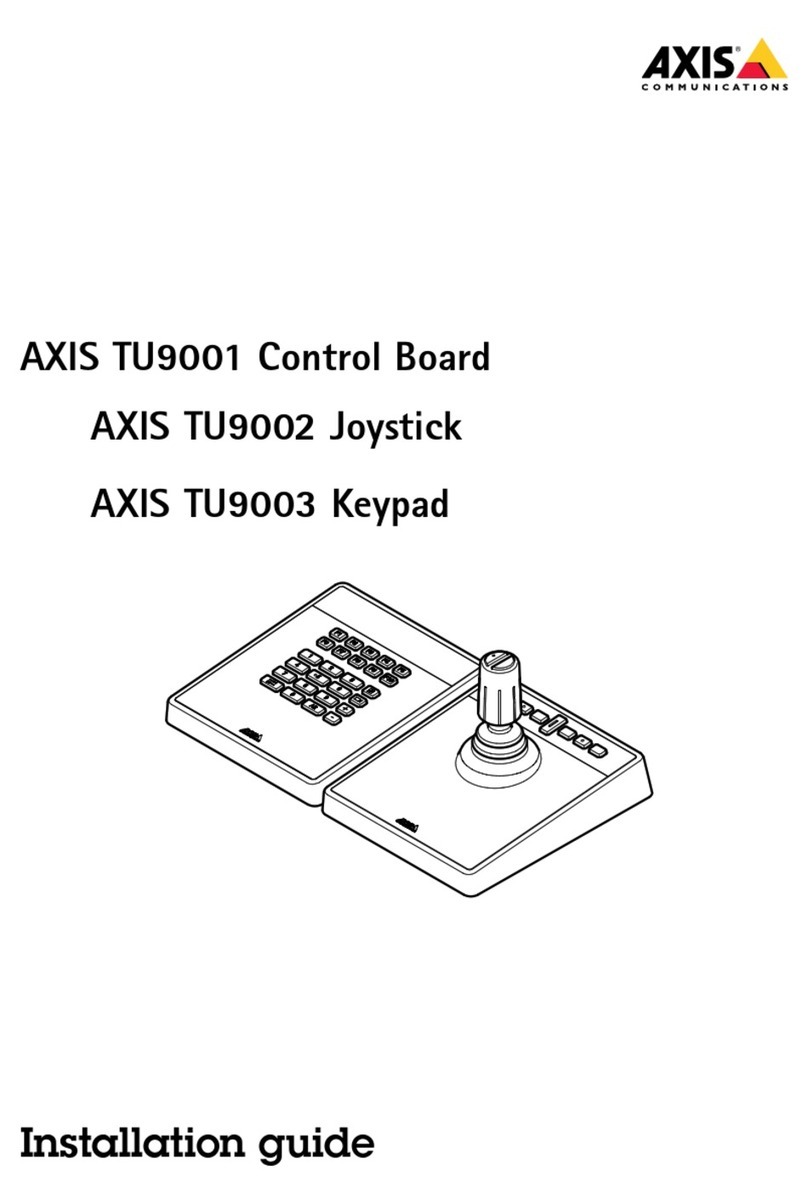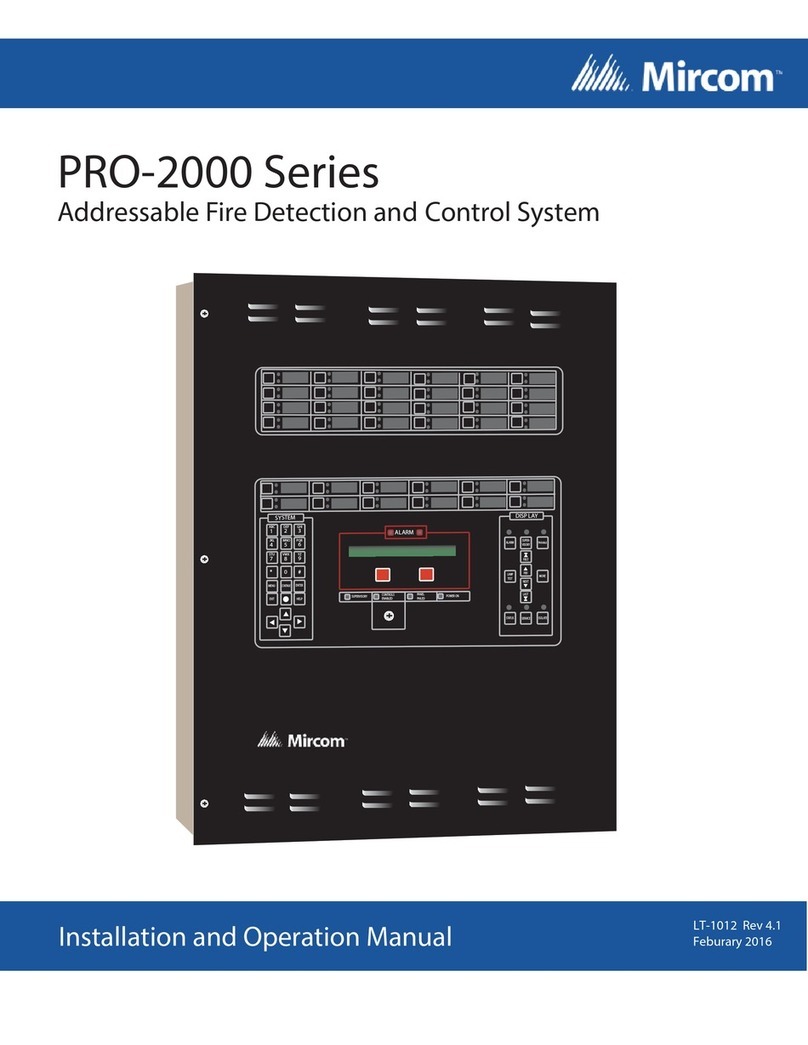CSP Pacific SENTRY MEDIAN BARRIER User manual

November 2020 | Page 1Ph 0800 655 200 or visit www.csppacific.co.nz
KEEPING
NZ SAFE
Roadside Workplace Roadwork Pedestrian Seeing Environment Telecoms
SENTRY MEDIAN BARRIER
Longitudinal Median Barrier
Product and Installation Manual
Please call CSP®
on 0800 655 200 or visit
www.csppacic.co.nz for more information
November 2020
KEEPING
NZ SAFE

November 2020 | Page 2Ph 0800 655 200 or visit www.csppacific.co.nz
Product & Installation Manual: Sentry Median Barrier
KEEPING
NZ SAFE
Table of contents
Introduction
System Overview
Limitations and Warnings
Training
Health and Safety
Before Installation
Safety statements
General Safety
Sentry Barrier Safety Statements
Limited Warranty
System Design and Design Considerations
Product Orientation
Kerbs
Horizontal and Vertical Curves
Slopes
Undulating Ground Conditions
Clear Zone / Hazard Free Zone
Terminal Ends
Soil Condition
Length of Need
System Deection
Transitions
Parts Identication
Bill of Materials
Installation
Getting Started
Preparation
Soil Conditions
4
5
5
5
6
6
6
6
6
7
8
8
8
8
8
9
9
9
10
10
11
11
12
13
14
14
14
14

November 2020 | Page 3Ph 0800 655 200 or visit www.csppacific.co.nz
Product & Installation Manual: Sentry Median Barrier
KEEPING
NZ SAFE
Tools Required
Installation Tolerances
Installation Instructions
Site Preparation
Post driver machine - Impact head
Construction of Terminal End
Installation Procedure (Posts and W-Beam)
Installation Checklist
Inspection and Maintenance
Requirement after a Bushre or Flooding
Frequently Asked Questions
Appendices
Appendix A – Sentry Median Barrier
Appendix B – Sentry Median Post
Appendix C – Sentry Washer
Appendix D – F1640 (M16X50 Bolt and Nut)
Appendix E – Sentry Tolerance
Appendix F – Sentry Median Barrier Transition to X350M Median Terminal
Appendix G – Sentry Median Barrier Installation Checklist
Appendix H - Sentry Median Barrier Inspection Checklist
Appendix I – Acceptable Post Deformation Measures & Tolerances
Test 1: Nut Pass-through
Test 2: Washer Fitment
Test 3: Post deformation bending and cracking tolerance
Appendix J – Sentry Median Post Orientation & Rail Overlapping Detail
15
16
17
17
17
18
18
22
22
23
24
25
26
27
28
29
30
31
32
33
35
35
35
35
36
CSP®may make changes to this Product Manual from time to time. Please check the CSP®
website prior to using this Product Manual to ensure that you have the latest version.

November 2020 | Page 4Ph 0800 655 200 or visit www.csppacific.co.nz
Product & Installation Manual: Sentry Median Barrier
KEEPING
NZ SAFE
Introduction
The Sentry Median Barrier is a W-Beam
guardrail system suitable for containing,
redirecting and shielding vehicles from
opposing trafc or dual carriageways. The
barrier has been designed and tested to meet
the evaluation criteria of MASH Test Level 3
for a longitudinal median barrier conguration.
MASH TL-3 is the latest testing standard and it
has signicantly higher impact conditions than
the out-dated NCHRP 350 standard.
The Sentry Median Barrier has an initial
installation height of 790 mm (31”) to the top
of the guardrail, providing the system with the
ability to withstand numerous road surface
overlays without the need to relevel of lifting of
the barrier. The Sentry Median Barrier must be
installed with an approved Median Terminal End
on the approach and departure ends.
The rounded edges to the Sentry Barrier Post
and closed shape on the approach direction
provide increased protection for vulnerable
road users. The compact Sentry Barrier Posts
are easy to drive into all soil types and provide
increased resistance to rotation in the soil when
impacted. Unlike other systems on the market,
any damage caused to the top of the posts or
to the rail mounting points during installation will
not affect the performance of the system.
The connection system between the rail and
posts is formed using conventional fasteners
providing it with the greatest tolerance of any
system on the market. If the connection is
damaged in any way it can be easily replaced
without replacing the posts allowing for simpler
installations and repairs. The Sentry Median
Barrier is installed quickly using conventional
installation tools and equipment. It does not
require the use of blockouts, making it one of
the narrowest systems on the market.
System Overview
The Sentry Median Barrier is designed to
provide acceptable structural adequacy, minimal
occupant risk and safe vehicle trajectory as
required by the latest in safety standards,
AASHTO MASH Test Level 3 (TL-3). This system
was independently evaluated under full impact
conditions of 100 km/hr and impact angles of
25 degrees.
When impacted by an errant vehicle, the
Sentry Median Barrier will redirect the vehicle
along the face of the barrier system, bringing
it to a controlled stop. The system has been
developed to produce minimal debris during an
impact, with all posts designed to remain rmly
located in the soil and the connection details
to remain attached to the rail. Repair of the
system is completed by removing and replacing
any bent or damaged W-Beam and posts
impacted accordingly. Any posts with damaged
connections can be repaired by replacing the
connection hardware only, reducing the need to
remove posts and repair damaged ground.
Key specications for the Sentry Median Barrier
are:
System width 283 mm
Height to top of rail 800 mm
Height to top of post 790 mm
Post weight 13.6 kg
Post length 1.64 m
Post spacing 1.905 m
MASH TL3.10 dynamic deection 1.10 m
MASH TL3.11 dynamic deection 1.59 m

November 2020 | Page 5Ph 0800 655 200 or visit www.csppacific.co.nz
Product & Installation Manual: Sentry Median Barrier
KEEPING
NZ SAFE
The minimum Length of Need (LoN) of the
Sentry Median Barrier is dependent on the
posted speed limit. Please refer to roading
authority approval letters for local minimum
length requirements. However, a minimum
length of need for a two-way road with a posted
speed limit of 100 km/hr with a clear zone of
approaching trafc is recommend as 30 m,
excluding terminal ends.
The Sentry Median Barrier systems rails and
posts are manufactured from hot-rolled steel
at products in accordance with Standard AS/
NZS 1594 and hot-dip galvanised in accordance
with Standard AS/NZS 4680 with an average
minimum coating thickness of 35 microns.
All galvanising is undertaken after fabrication
is completed to ensure no surfaces are left
untreated.
The Sentry Median Barrier has been designed
for strength and resilience.
Limitations and Warnings
The Sentry Median Barrier forms part of an
approved roadside protection system and
it must be installed in conjunction with an
approved terminal end system on both the
approach and trailing ends. When installed in
accordance with the manufacturer’s instruction
the barrier system allows an impacting vehicle
to be re-directed in a safe and predictable
manner under the MASH impact conditions.
Vehicle impacts that vary from the MASH impact
conditions for longitudinal barriers may result
in signicantly different outcomes from those
obtained in the experimental testing and may
not meet the MASH evaluation criteria.
The selection and placement of the Sentry
Median Barrier must be in accordance with the
Roading Controlling Authorities guidelines and
the details shown in the construction drawings.
Installation must be within strict accordance
with the installation instructions for the product.
Alternative installation techniques will be
required if the soil conditions on site do not
meet the minimum requirements stated in this
manual.
Training
All Installers must undergo formal training on
the installation of the Sentry Median Barrier
by an approved trainer. At the completion of
the training, installers will be able to identify
each component of the Sentry Median Barrier,
knowledge of the correct methods to handle the
equipment and have the knowledge to safely
install the barrier as per the Installation Manual
and Specications required.
The training will also include the correct
Personal Protective Equipment (PPE) required to
be worn during installation and maintenance.

November 2020 | Page 6Ph 0800 655 200 or visit www.csppacific.co.nz
Product & Installation Manual: Sentry Median Barrier
KEEPING
NZ SAFE
Health and Safety
Installers should comply with all necessary
health and safety legislation in the local
jurisdiction, including all safe work and lifting
practices.
All appropriate trafc safety precautions must
be adopted. All workers must wear the required
safety clothing, including but not limited to, high
visibility vests, steel capped footwear, gloves
and protective glasses etc.
Before undertaking any earth works, including
drilling or driving of posts, always check with
the appropriate service providers that the area is
clear of underground services
All installers must be well clear of machinery
when posts are being driven.
Before Installation
Design and placement of the Sentry Median
Barrier shall be in accordance with the local
Road Controlling Authority’s guidelines and
as per the details shown in the construction
drawings. Installation shall be in accordance
with the Product and Installation Manual
instructions supplied for this product.
The Sentry Median Barrier is an engineered
safety device. Before starting installation ensure
familiarity with all components of the system.
IF SOIL CONDITIONS ON SITE DO NOT MEET
OR EXCEED THE REQUIRED STRENGTH,
SITE SPECIFIC CONDITIONS, REFER TO A
LOCAL GEOTECHNICAL ENGINEER FOR
FURTHER ADVICE.
Safety statements
General Safety
>All required trafc safety precautions should
be complied with. All workers should wear
required safety clothing (examples, but not
limited to, include: high visibility vests, steel
capped footwear, gloves etc).
>Only authorised trained personnel should
operate any machinery. Where overhead
machinery is used, care must be taken to
avoid any overhead hazards.
>Before drilling or excavation always ensure
that the area is clear of underground
services. The appropriate service providers
may need to be contacted.
Sentry Median Barrier Safety Statements
>All installers must be a safe distance from all
drilling or excavating machinery operating.
>The components are not heavy enough to
require specialised lifting equipment, but
due to the dimensions and bulky nature,
care should be taken when lifting the larger
components into position.
>Avoid placing hands or ngers in and around
moving machine parts when components
are being lifted and manoeuvred into place.

November 2020 | Page 7Ph 0800 655 200 or visit www.csppacific.co.nz
Product & Installation Manual: Sentry Median Barrier
KEEPING
NZ SAFE
Limited Warranty
CSP Pacic (CSP) has tested the impact
performance of its barrier systems and crash
cushion systems, and other highway safety
hardware under controlled conditions, however,
CSP does not represent nor warrant that the
results of those controlled conditions would
necessarily avoid injury to persons or property.
TO THE MAXIMUM EXTENT PERMITTED
BY LAW, CSP EXPRESSLY DISCLAIMS
ANY WARRANTY OR LIABILITY FOR
CLAIMS ARISING BY REASONS OF DEATH
OR PERSONAL INJURY OR DAMAGE TO
PROPERTY RESULTING FROM ANY IMPACT,
COLLISION OR HARMFUL CONTACT WITH
THE PRODUCTS OR NEARBY HAZARDS OR
OBJECTS BY ANY VEHICLE, OBJECTS OR
PERSONS.
CSP warrants that any product or component part
manufactured by CSP will be free from defects in
material or workmanship. CSP will replace free of
cost any product or component part manufactured
by CSP that contains such a defect.
TO THE MAXIMUM EXTENT PERMITTED
BY LAW, CSP EXPRESSLY DISCLAIMS THE
FOREGOING WARRANTY IS IN LIEU OF AND
EXCLUDES ALL OTHER WARRANTIES NOT
EXPRESSLY SET FORTH HEREIN, WHETHER
EXPRESS OR IMPLIED BY OPERATION OF
LAW OR OTHERWISE, INCLUDING BUT NOT
LIMITED TO ANY IMPLIED WARRANTIES
OF MERCHANTABILITY OR FITNESS FOR A
PARTICULAR PURPOSE. CSP’S LIABILITY
UNDER THIS WARRANTY IS EXPRESSLY
LIMITED TO REPLACEMENT FREE OF
COST OF PARTS SUPPLIED BY CSP ONLY
(IN THE FORM AND UNDER THE TERMS
ORIGINALLY SHIPPED), OR TO REPAIR OR
TO MANUFACTURE BY CSP, PRODUCTS
OR PARTS NOT COMPLYING WITH CSP
SPECIFICATIONS, OR, AT CSP’S ELECTION, TO
THE REPAYMENT OF AN AMOUNT EQUAL TO
THE PURCHASE PRICE OF SUCH PRODUCTS
OR PARTS, WHETHER SUCH CLAIMS ARE FOR
BREACH OF WARRANTY OR NEGLIGENCE.
CSP SHALL NOT BE LIABLE FOR ANY
INCIDENTAL, CONSEQUENTIAL OR SPECIAL
LOSSES, DAMAGES OR EXPENSES OF ANY
KIND, INCLUDING, WITHOUT LIMITATION,
ANY SUCH LOSSES, DAMAGES OR EXPENSES
ARISING DIRECTLY OR INDIRECTLY FROM
THE SALE, HANDLING OR USE OF THE
PRODUCTS FROM ANY OTHER CAUSE
RELATING THERETO, OR FROM PERSONAL
INJURY OR LOSS OF PROFIT.
Any claim by the Buyer with reference to Products
sold hereunder for any cause shall be deemed
waived by the Buyer unless CSP is notied in
writing, in the case of defects apparent on visual
inspection, within ninety (90) days from the delivery
date, or, in the case of defects not apparent on
visual inspection, within twelve (12) months from
the said delivery date. Products claimed to be
defective may be returned prepaid to CSP’s plant
for inspection in accordance with return shipping
instructions that CSP shall furnish to the Buyer
forthwith upon receipt of the Buyer’s notice of claim.
If the claim is established, CSP will reimburse that
Buyer for all carriage costs incurred hereunder.
The forgoing warranty benets shall not apply to (i)
any Products that have been subject to improper
storage, accident, misuse or unauthorised
alterations, or that have not been installed,
operated and maintained in accordance with
approved procedures and (ii) any components
manufactured by the Buyer.
The customer acknowledges that it has acquired
the Goods for the purposes of a business and that
the Consumer Guarantees Act 1993 will not apply
to the supply of the Goods by CSP to it.

November 2020 | Page 8Ph 0800 655 200 or visit www.csppacific.co.nz
Product & Installation Manual: Sentry Median Barrier
KEEPING
NZ SAFE
System Design and Design
Considerations
Product Orientation
The Sentry Median Barrier can be installed
between lanes or roads travelling in a single or
opposing direction. The installation will remain
the same with the exception of the overlapping
of the W-beam (“guardrail”) as stated by
Standard AS/NZS 3845.1:2015.
Kerbs
As with all road side safety hardware, the Sentry
Median Barrier has been designed and tested
so that the centre of gravity of the impacting
vehicle is at a constant height in relation to the
system. For this reason, it is preferred that kerbs
or channels are not in front or directly behind
the Sentry Median Barrier as they may result in
altering the height of the vehicle at impact.
If interaction with a kerb cannot be avoided
consult the local Road Controlling Authority
guidelines regarding allowable kerb heights,
kerb shapes, and barrier offset distance.
Horizontal and Vertical Curves
The Sentry Barrier can accommodate both
horizontally and vertically curved guardrail
panels if required by site conditions. For radii
less than 25 m the system must be anchored
with an approved intermediate anchor or
terminal end. Please refer to approved details
of the local Road Controlling Authority where
necessary.
Slopes
The Sentry Median Barrier can be installed on
ground with a maximum cross fall of 6H:1V.
For steeper slopes it is recommended that the
system is installed no closer than 300 mm to the
batter hinge point of the slope. If an installation
with clearance less than 300 mm is required,
please contact CSP®.
Note: Installations in close proximity to a
batter hinge must be considered within the
requirements of the road controlling authority.
Single
trac direction
Opposing
trac direction
Concave
corner
Convex
corner

November 2020 | Page 9Ph 0800 655 200 or visit www.csppacific.co.nz
Product & Installation Manual: Sentry Median Barrier
KEEPING
NZ SAFE
Undulating Ground Conditions
Site specic grading may be necessary to
ensure that there are no ‘humps’ or ‘hollows’
that may signicantly alter the impacting
vehicles stability or substantially alter the
W-Beam heights in relation to the ground. The
Sentry Median Barrier is required to be installed
level and centred on the barrier line as stated in
the Installation Procedure.
Care must be taken to ensure all posts in the
Sentry Median Barrier are installed to the correct
height, alignment and orientation. It is strongly
recommended that smoothing of uneven ground
conditions be completed along the length of the
Sentry Median Barrier.
Clear Zone / Hazard Free Zone
Clear Zones are areas adjacent to trafc lanes
that provide errant vehicles the opportunity to
slow down or recover. The clear zone must be
kept clear from roadside features that could be
hazardous to an errant vehicles, such as but not
limited to trees, poles and culverts. Although
it is desirable to maximize the available clear
zone, please refer to your local Road Controlling
Authority for conrmation of the minimum width
requirements.
Terminal Ends
The Sentry Median Barrier is designed to be
compatible with the MAX-Tension™ Terminal
End. For an alternative Terminal End, refer to
Appendix F – Sentry Median Barrier Transition to
X-350 Median Terminal End.
The purpose of the W-Beam guardrail terminals
ends or crash cushions is to provide a soft
impact and to prevent the end rail from spearing
or impacting the errant vehicle. The terminals
ends and crash cushions also provide tensile
and deection strength necessary to ensure the
errant vehicle is redirected for the length-of-
need required.
>Care must be taken to ensure the correct
post spacing is ALWAYS used during the
installation.
>Care must be taken to ensure the posts are
orientated correctly during installation and to
ensure all W-Beams bolts are inserted and
tightened accordingly.
>Care must be taken to ensure the line posts
are installed at the correct height.

November 2020 | Page 10Ph 0800 655 200 or visit www.csppacific.co.nz
Product & Installation Manual: Sentry Median Barrier
KEEPING
NZ SAFE
Soil Condition
The Sentry Median Barrier is a soil-mounted
system driven directly into the soil. To meet the
barriers performance requires the soil to meet
AASHTO Grade B standard and requirements
set out by Standard AS/NZS 3845.1:2015 and
TNZ Specication M/4 2006.
Soil conditions on site that do not meet these
requirements will require alternative installation.
Contact CSP®for details. It is strongly
recommended that soil tests be completed at
the location where the Sentry Median Barrier is
to be installed.
Note: All technical information required to
assist in designing a site specic foundation is
available from CSP®.
IF SOIL CONDITIONS ON SITE DO NOT MEET
OR EXCEED THE REQUIRED STRENGTH,
SITE SPECIFIC CONDITIONS, REFER TO A
LOCAL GEOTECHNICAL ENGINEER FOR
FURTHER ADVICE.
Length of Need
The minimum Length of Need (LoN) of the
Sentry Median Barrier is dependent on the
specic hazard being protected and the posted
speed limit. Please refer to Roading Control
Authority approval letters for local minimum
length requirements.
The minimum LoN for a two-way road with a
posted speed limit of 100 km/hr with a clear
zone of approaching trafc is recommend as 30
metres plus the length of the terminal end on
either end of the barrier system. We recommend
Installers contact their local Roading Control
Authority for further information or guidance.
Note: As per the LoN design section of the
Roading Control Authorities guidelines, care
must be taken when calculating the actual
length of a barrier required verses the theoretical
length of need.

November 2020 | Page 11Ph 0800 655 200 or visit www.csppacific.co.nz
Product & Installation Manual: Sentry Median Barrier
KEEPING
NZ SAFE
System Deflection
The transverse deection of a barrier during
a crash is dependent upon the mass, speed,
and impact angle of the errant vehicle. The
dynamic deection of the Sentry Median Barrier
is derived from physical testing completed on
the Sentry Barrier System in both roadside
conguration (single sided) and median
conguration (double sided).
The maximum measured dynamic deection
(2270 kg vehicle) of the system was recorded as
1.59 m.
A review of the proposed barrier location can
be undertaken to assess the following variables
inuence on the likely maximum system
deection;
>Maximum attainable impact angle;
>Design speed; and
>Design vehicle.
Please refer to CSP®for assistance on
determining site specic deections based on
these parameters.
Transitions
A transition zone may be required to connect
the Sentry Median Barrier to other types of
barriers or non-approved terminal ends. Please
contact CSP®for guidance on acceptable
transition systems, advice may differ across
different state roading jurisdictions.
Refer to Appendix F – Sentry Median Barrier
Transition to X-350 Median Terminal End in this
manual for guidance on installation.

November 2020 | Page 12Ph 0800 655 200 or visit www.csppacific.co.nz
Product & Installation Manual: Sentry Median Barrier
KEEPING
NZ SAFE
Parts Identification
ALL STEEL COMPONENTS USED IN THE SENTRY MEDIAN BARRIER ARE HOT DIPPED
GALVANISED IN ACCORDANCE WITH STANDARD AS/NZS 4680:2006 (AVERAGE MINIMUM
COASTING THICKNESS SHOULD BE 35 MICRONS) WITH THE EXCEPTION OF THE SENTRY
BARRIER WASHER BEING SPUN GALVANISED.
Sentry Median Barrier Post (2 views)
Sentry Barrier
Bolt, Washer & Nut
W-Beam
Splice, Bolt & Nut

November 2020 | Page 13Ph 0800 655 200 or visit www.csppacific.co.nz
Product & Installation Manual: Sentry Median Barrier
KEEPING
NZ SAFE
Bill of Materials
Checklist per panel (3.81 m of barrier) installed Yes
2x Sentry Median Barrier Posts
2x Sentry Barrier Bolt, Washer and Nut (two per post)
2x W-Beam
16x Splice Bolts and Nuts (at the end of W-Beam and overlapping the prior W-Beam)
General equipment required
Drilling or compactor suitable for foundation
String line and pegs
Measuring tape
Level
32 mm Wrench
32 mm Ring Spanner
Automatic drill (with 10mm allen key hex bit)

November 2020 | Page 14Ph 0800 655 200 or visit www.csppacific.co.nz
Product & Installation Manual: Sentry Median Barrier
KEEPING
NZ SAFE
Installation
Getting Started
The Sentry Median Barrier is a W-Beam barrier
designed to run the length of need required
and is attached to a compatible terminal end.
The minimum Length of Need (LoN) allowed is
dependent on the post speed limit. For a 100
km/hr zone a minimum LoN of 30 metres is
recommended, excluding the proposed terminal
end.
Preparation
Before installing an Sentry Median Barrier,
ensure that all components required for the
system are on site and have been identied.
The Sentry Median Barrier is an engineered
safety device. Before starting installation ensure
familiarity with the makeup of the system. Refer
to the Bill of Materials and Parts Identication
sections in this manual for more information.
Ensure that the area where the Sentry Median
Barrier is to be installed is sufciently at so
that the posts and W-Beam can be installed
within the allowable tolerance and aligned to
the terminal ends. Minor site grading may be
required.
Soil Conditions
The Sentry Median Barrier has been designed
to withstand a constant static load, thermal
loading, and dynamic impact load that can be
applied from the impact of an errant vehicle.
To perform, the Sentry Median Barrier must be
attached to a MAX-Tension™ Median Terminal
End to provide the necessary safety benets. It
is recommended that the soil tests are carried
out at the location the Sentry Median Barrier
prior to being installed.
IF SOIL CONDITIONS ON SITE DO NOT MEET
OR EXCEED THE REQUIRED STRENGTH
DETAILED IN THIS MANUAL, SITE SPECIFIC
FOUNDATIONS MUST BE DESIGNED BY A
LOCAL GEOTECHNICAL ENGINEER.

November 2020 | Page 15Ph 0800 655 200 or visit www.csppacific.co.nz
Product & Installation Manual: Sentry Median Barrier
KEEPING
NZ SAFE
Tools Required
The tools required to install the Sentry Median
Barrier are similar to other W-Beam barriers. It
requires:
Appropriate personal protective equipment
Drilling or compactor machinery (suitable for
soil conditions and with a driving head to avoid
damage to posts during installation)
String line
Measuring tape
Level
32mm Socket wrench or Ratchet
32mm Ring spanner
Automatic drill
(with 10 mm allen key hex bit)

November 2020 | Page 16Ph 0800 655 200 or visit www.csppacific.co.nz
Product & Installation Manual: Sentry Median Barrier
KEEPING
NZ SAFE
Installation Tolerances
The Sentry Median Barrier is an engineered
safety device. To obtain optimal performance
it is important to install all components of the
system to within the allowable tolerances stated
below (also in Appendix E). Particular care must
be taken to ensure;
>Suitable horizontal alignment and verticality
of the line posts.
>Consistency in the vertical height of the line
posts.
>Orientation and height of the terminal end.
Sentry Median Barrier has to be installed at
780mm to the top of the post. A vertical height
tolerance of +25mm is acceptable for the
Sentry Barrier Post. The top of the W-Beam is
to be positioned 10mm above the top of the
Sentry Barrier Post with an additional tolerance
of ±5mm. The Sentry Barrier Post laterally is
constrained to ±15mm tolerance. It is of upmost
importance for these tolerances to be adhered
to in order to ensure safe function of the Sentry
Median Barrier.
Once installed, the relative height of the
Sentry Median Barrier to the surrounding road
surface may alter due to road surface overlays.
Experience has shown that the overlays may be
acceptable until the relative height from the top
of the rail to the road surface falls below 715
mm. Please contact CSP®should the installation
fall outside this tolerance.

November 2020 | Page 17Ph 0800 655 200 or visit www.csppacific.co.nz
Product & Installation Manual: Sentry Median Barrier
KEEPING
NZ SAFE
Installation Instructions
Before installing the Sentry Median Barrier,
ensure that all components required for the
system are on site and have been identied. The
Sentry Median Barrier is an engineered safety
device made up of relatively small number of
parts. Please ensure familiarity with the makeup
of the system and the installation process prior
to commencing. If required, refer to the Bill of
Materials and Parts Identication sections in this
manual for more information.
Site Preparation
It is preferred that the Sentry Median Barrier be
installed on at, level ground and connected
to an approved terminal end. The positioning
of the Sentry Median Barrier commences from
the last post connected to the terminal end,
working upstream to the prior terminal end. It
is recommended that a string line be used to
obtain the correct orientation and placement of
the posts and are aligned to the terminal end.
BEFORE DRILLING OR EXCAVATION
ALWAYS ENSURE THAT THE AREA IS CLEAR
OF UNDERGROUND SERVICES.
Post Orientation
The preferred orientation of the Sentry Barrier
roadside post, is to have trafc facing the closed
side of the post. However, for a median system
with trafc ow in both directions, the open side
of the post will face one of the trafc directions
by default. The orientation of the post must be
consistent for the entire length of the barrier.
Please refer to Appendix J – SENTRY MEDIAN
POST ORIENTATION & RAIL OVERLAPPING
DETAIL for preferred post orientation in different
median applications.
Post driver machine - Impact head
Ensure a suitable post driver impact head that
has been designed to drive Sentry posts is
used in order to avoid damage to posts during
installation. Below are examples of suitably
designed impact heads. Contact CSP®for
assistance if required.
In cases where very hard ground conditions
are encountered, minor deformation may occur
near the top of the post. If it occurs, please
refer to Appendix I – ACCEPTABLE POST
DEFORMATION MEASURES & TOLERANCES,
to determine if the deformation is acceptable for
the continuation of installation.

November 2020 | Page 18Ph 0800 655 200 or visit www.csppacific.co.nz
Product & Installation Manual: Sentry Median Barrier
KEEPING
NZ SAFE
Construction of Terminal End
The Sentry Median Barrier is compatible with
the MAX-Tension™ Median Terminal End which
provides optimal performance. Please refer to
the relevant MAX-Tension™ Median Terminal
End installation Manual for guidance to the
construction and installation procedure.
Also refer to Appendix F – Sentry Median Barrier
Transition to X-350 Median Terminal End in this
manual for guidance on installation.
Installation Procedure (Posts and W-Beam)
Step 1
Review the site location and identify possible
hazards prior to commencing the installation of
the Sentry Median Barrier. Any concerns, please
refer to the local Roading Authority.
Step 2
Place a string line from the centre of the
downstream terminal end or crash cushion to
required location of the upstream terminal end.
The string line should pass over the centre of
each post location and be marked accordingly
as the required location for drilling or driving
each post.

November 2020 | Page 19Ph 0800 655 200 or visit www.csppacific.co.nz
Product & Installation Manual: Sentry Median Barrier
KEEPING
NZ SAFE
Step 3
Identify the correct orientation of the post.
The post must be vertically aligned and within
the tolerance level stated in the Installation
tolerance drawings. The driving of the post
should not incur any damage to the post. If
a post is damaged it must be inspected and
removed if deemed appropriate.
Drive the posts to a depth of 850mm (790 mm
protruding above ground) as stipulated in the
drawings.
Step 4
Supporting the W-Beam in the desire location.
It is vital that each W-Beam must overlap the
prior W-Beam positioned downstream as stated
in Standard AS/NZS 3845.1:2015. Failure to
correctly overlap the W-Beam may cause
snagging, poor barrier performance or risk injury
or death to the driver of the errant vehicle.
Install the Sentry Median Barrier Bolt, Washer
and Nut to the Sentry post.

November 2020 | Page 20Ph 0800 655 200 or visit www.csppacific.co.nz
Product & Installation Manual: Sentry Median Barrier
KEEPING
NZ SAFE
Step 5
Once supported by the Sentry Median Barrier
Bolt, insert the 8 Splice Bolts and Nuts joining
the upstream and downstream together. Snug
tighten all bolts once installed.
Step 6
Repeat Step 4 and Step 5 on the opposing side
of the barrier. Continue working downstream
from the rst installed W-Beam, connected to the
terminal end. Once the rst row of W-Beam has
been installed, continue on the reverse side until
all W-Beams have been attached.
CAUTION:
Please ensure the correct overlapping of the
W-Beam in accordance to the direction of the
trafc ow and as stated by Standard AS/NZS
3845.1:2015.
Single
trac direction
Opposing
trac direction
Table of contents
Other CSP Pacific Control System manuals
Popular Control System manuals by other brands
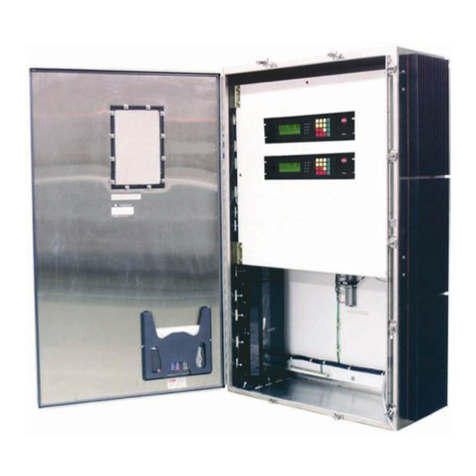
Thermon
Thermon TraceNet TCM18 Installation, Start-Up, and Maintenance Guide
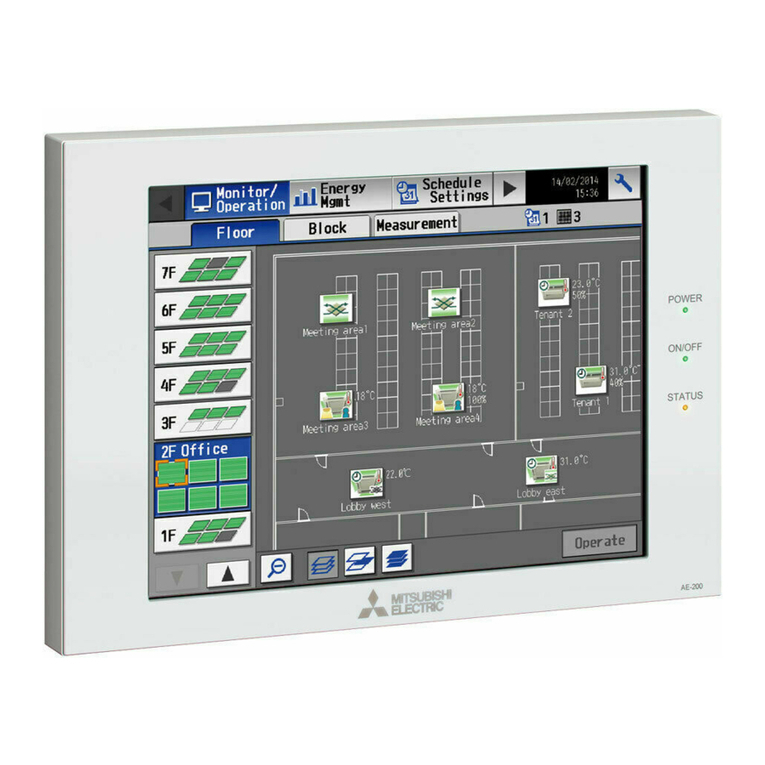
Mitsubishi Electric
Mitsubishi Electric AE-200A Instruction book
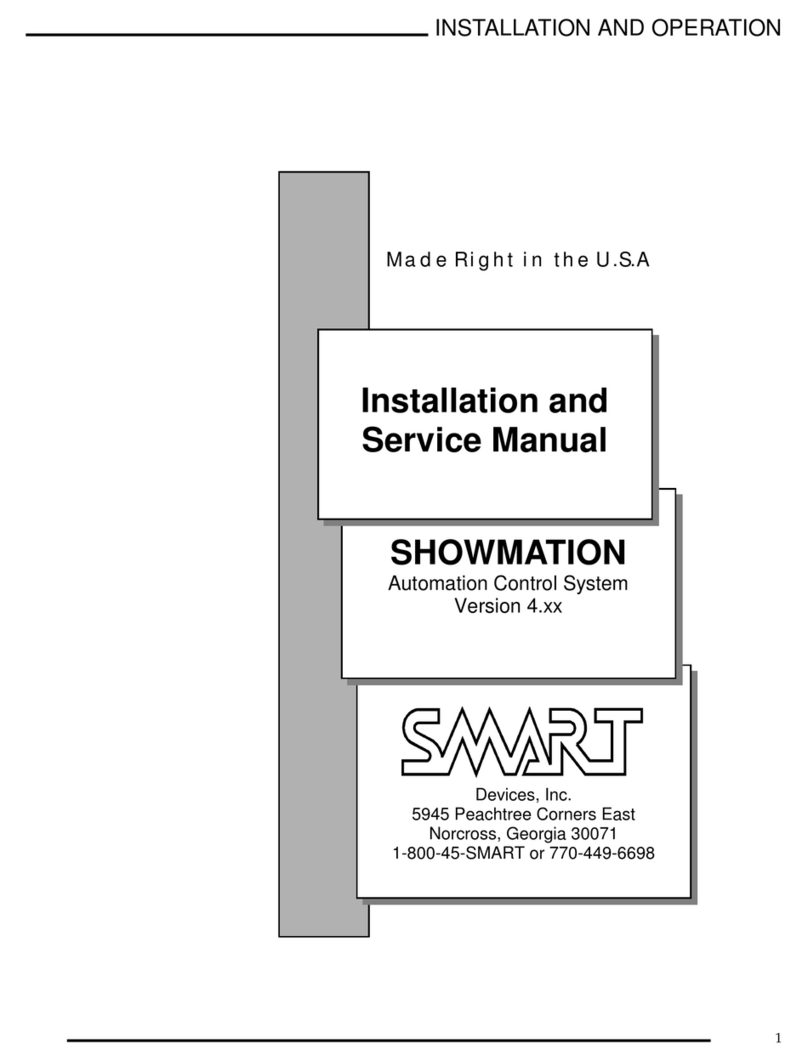
SMART
SMART Showmation Installation and service manual
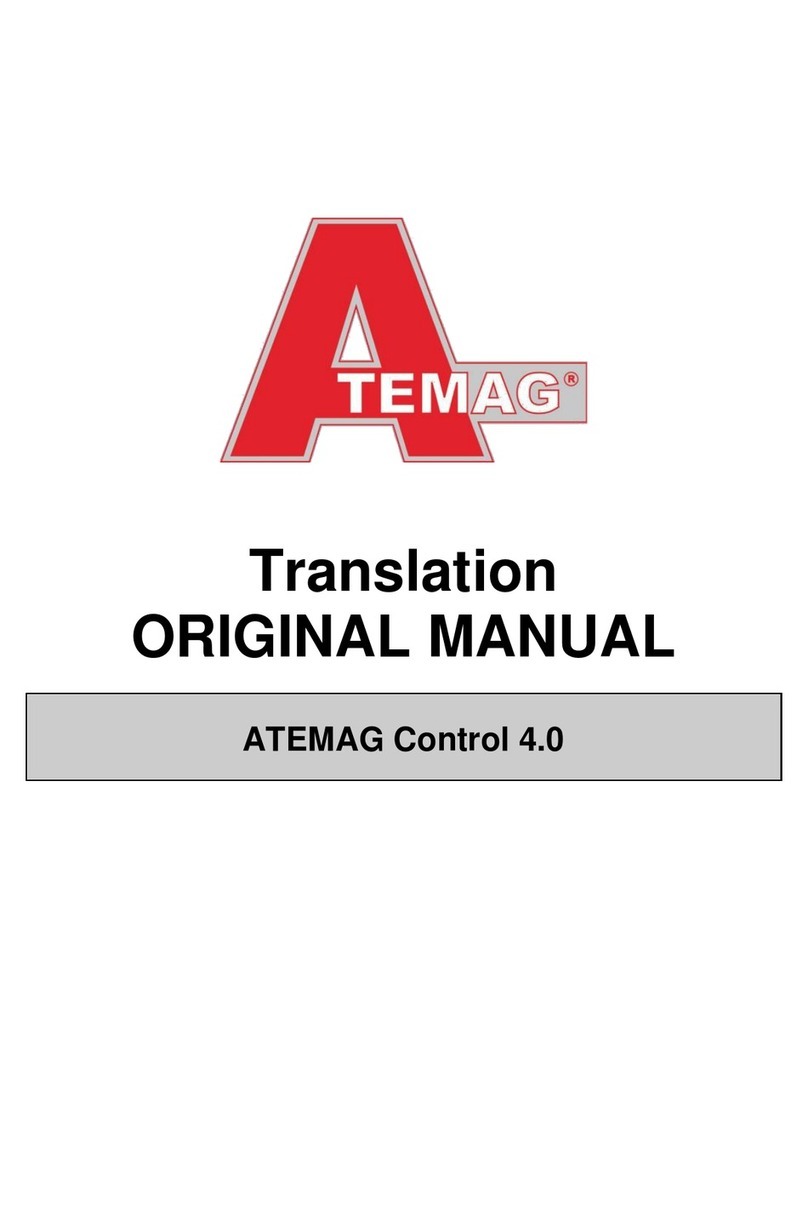
ATEMAG
ATEMAG Control 4.0 Translation original manual

Friendess
Friendess FSCUT6000 user manual
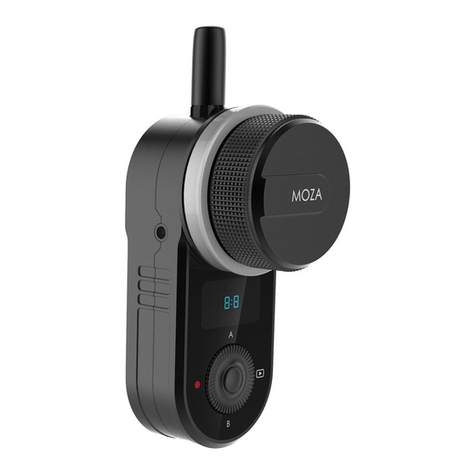
Moza
Moza iFocus user manual

Inovance
Inovance Monarch NICE Series user guide
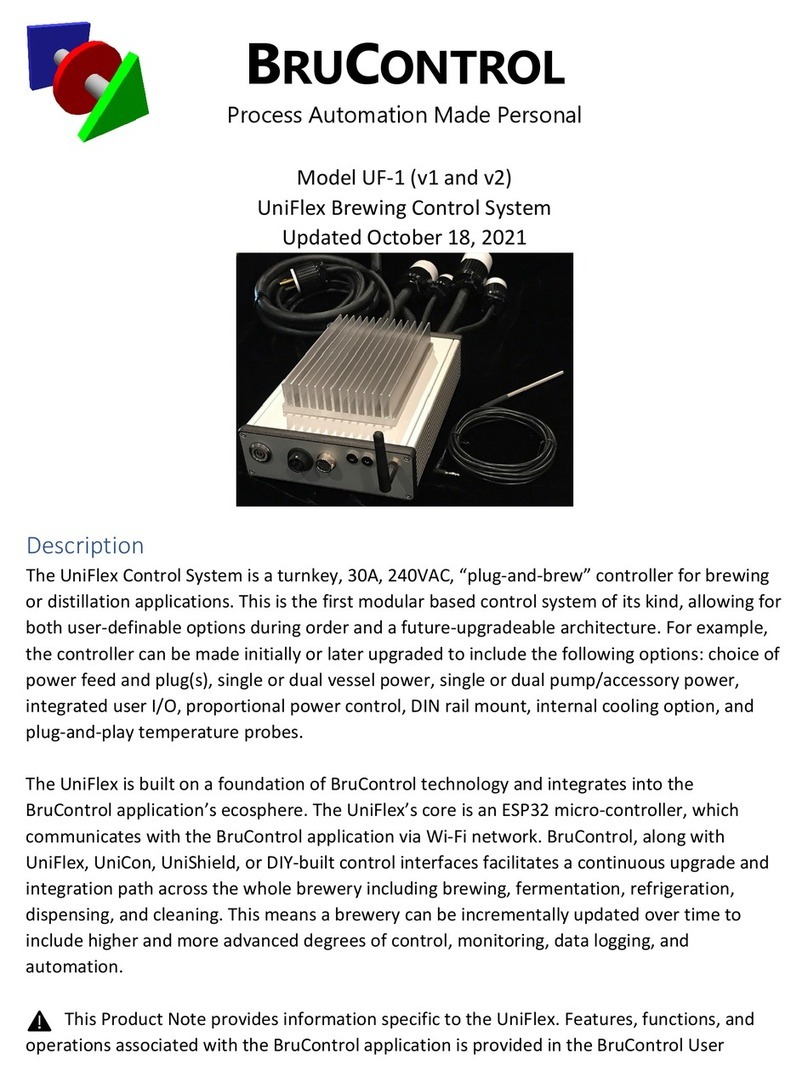
BRUCONTROL
BRUCONTROL UF-1 manual
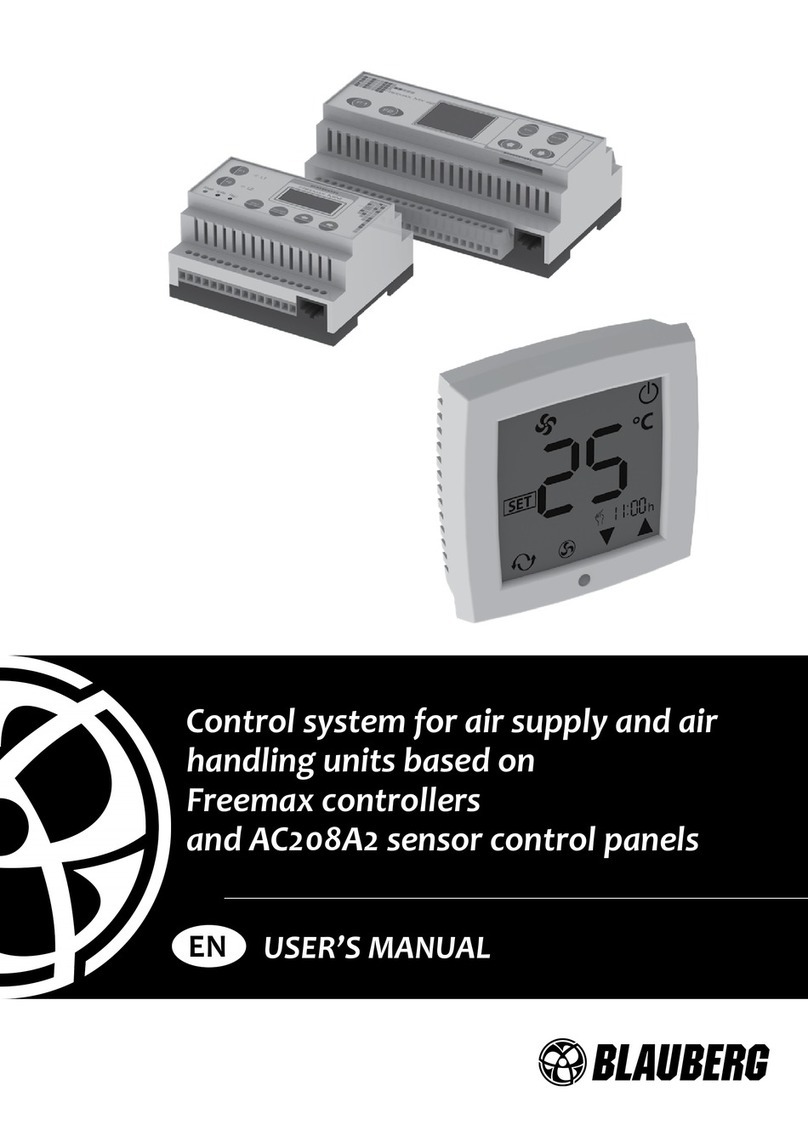
BLAUBERG
BLAUBERG BLAUBOX MW750-4 user manual
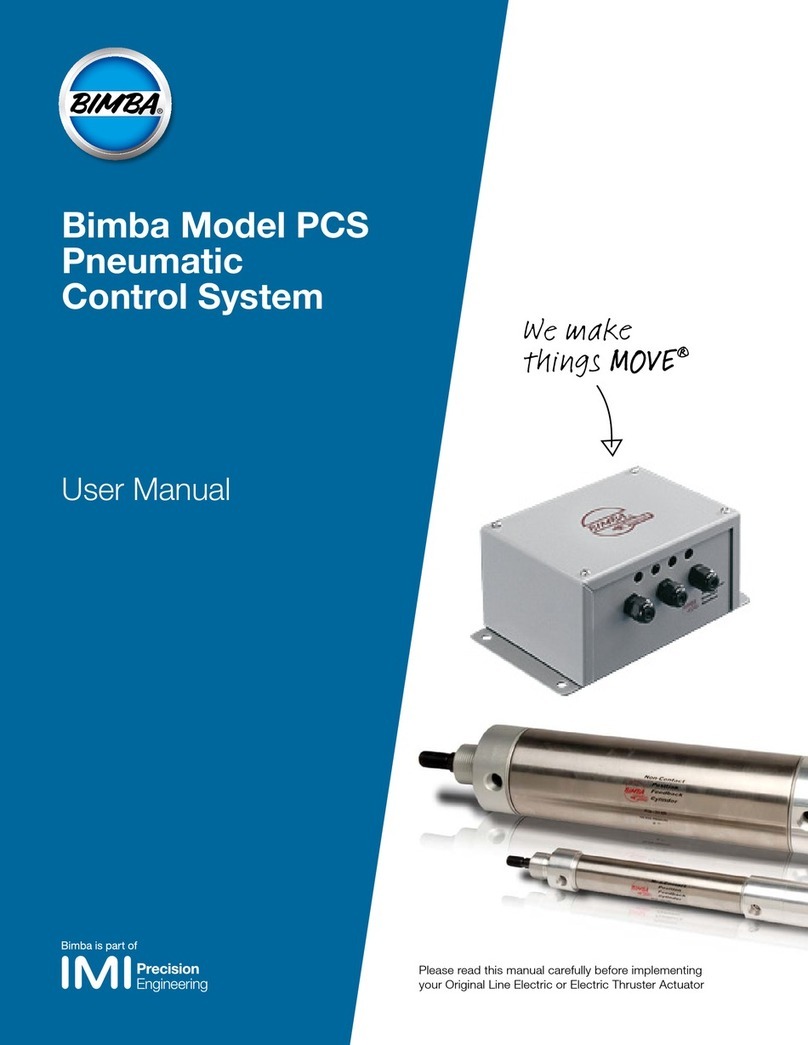
Precision Engineering
Precision Engineering Bimba PCS user manual
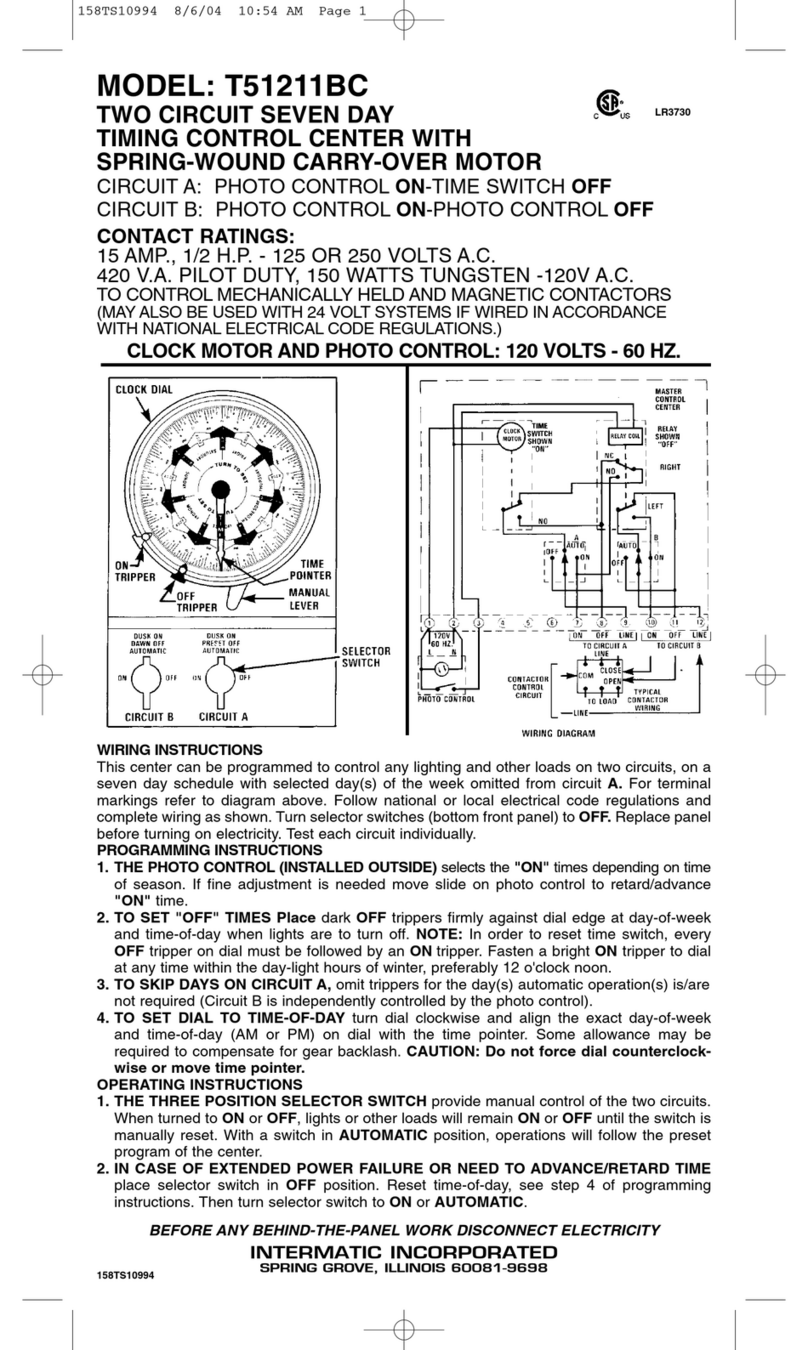
Intermatic
Intermatic T51211BC supplementary guide

WattMaster
WattMaster Auto-Zone CV Design, installation and operation

